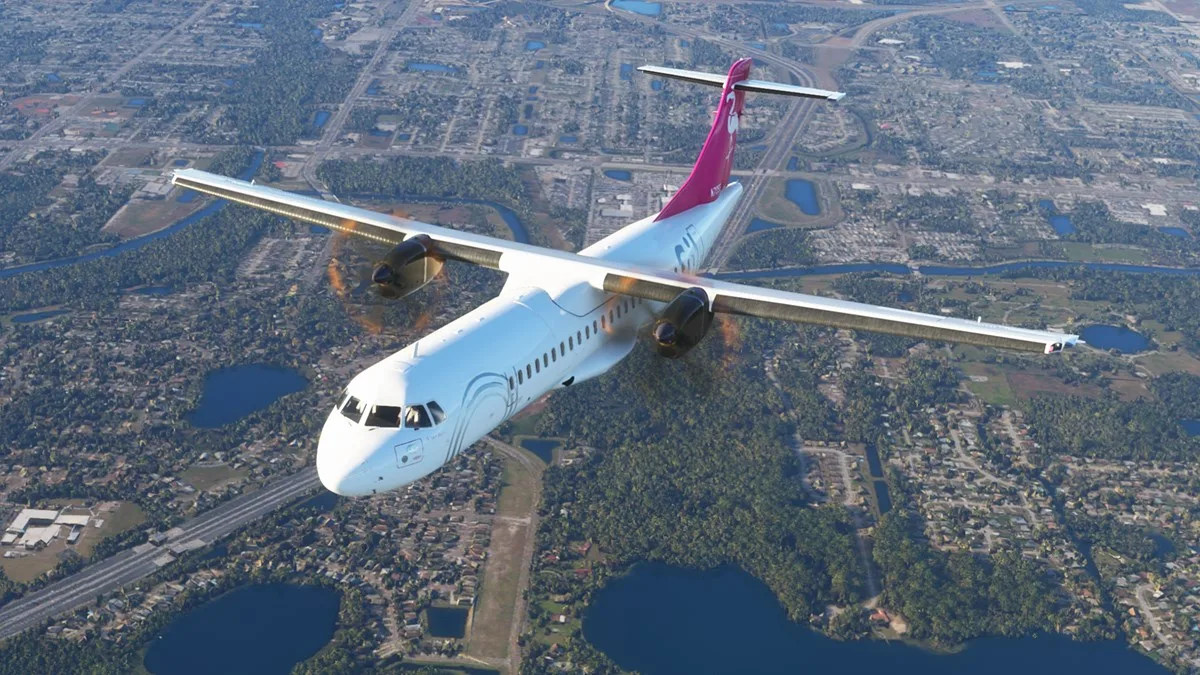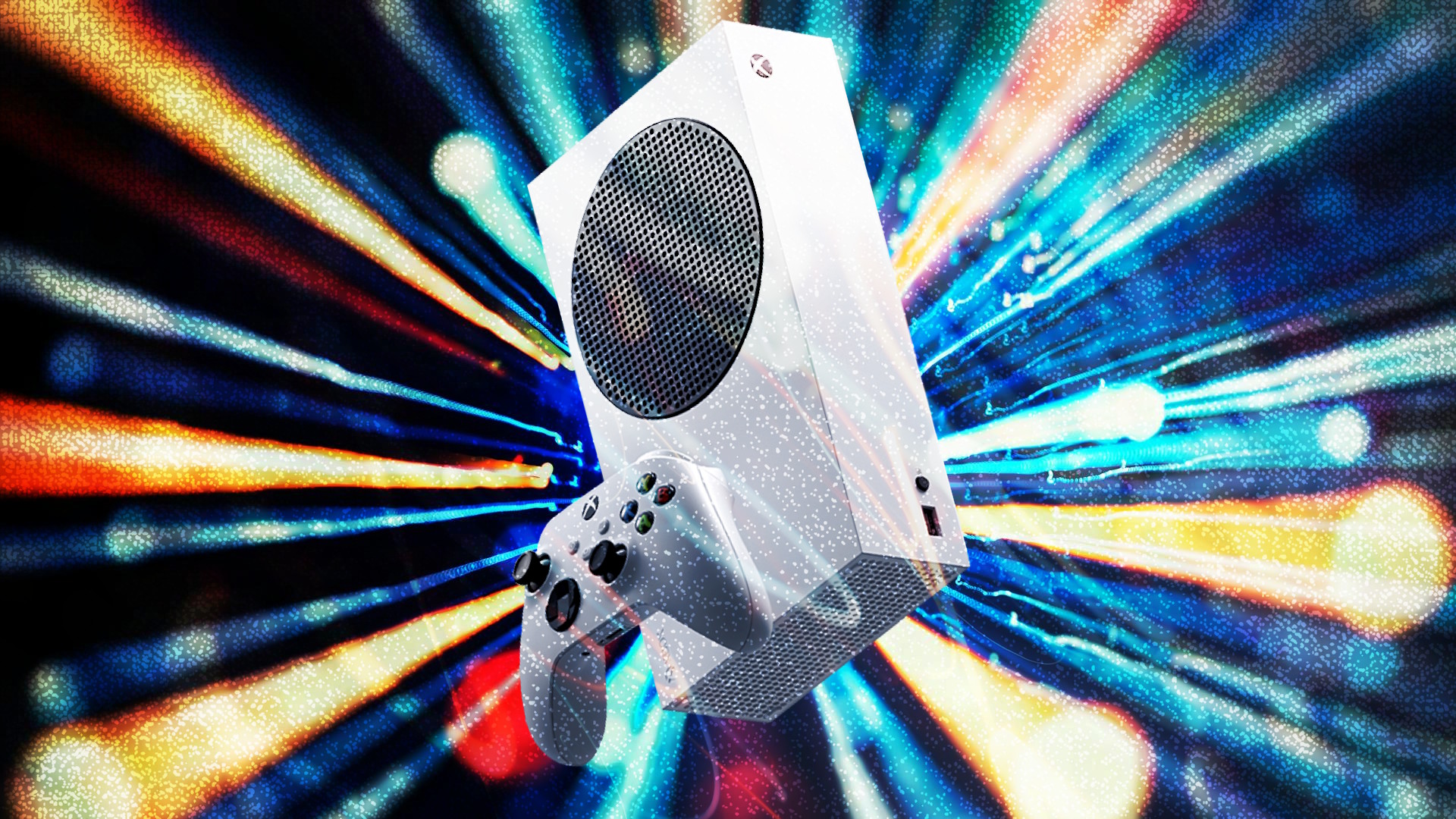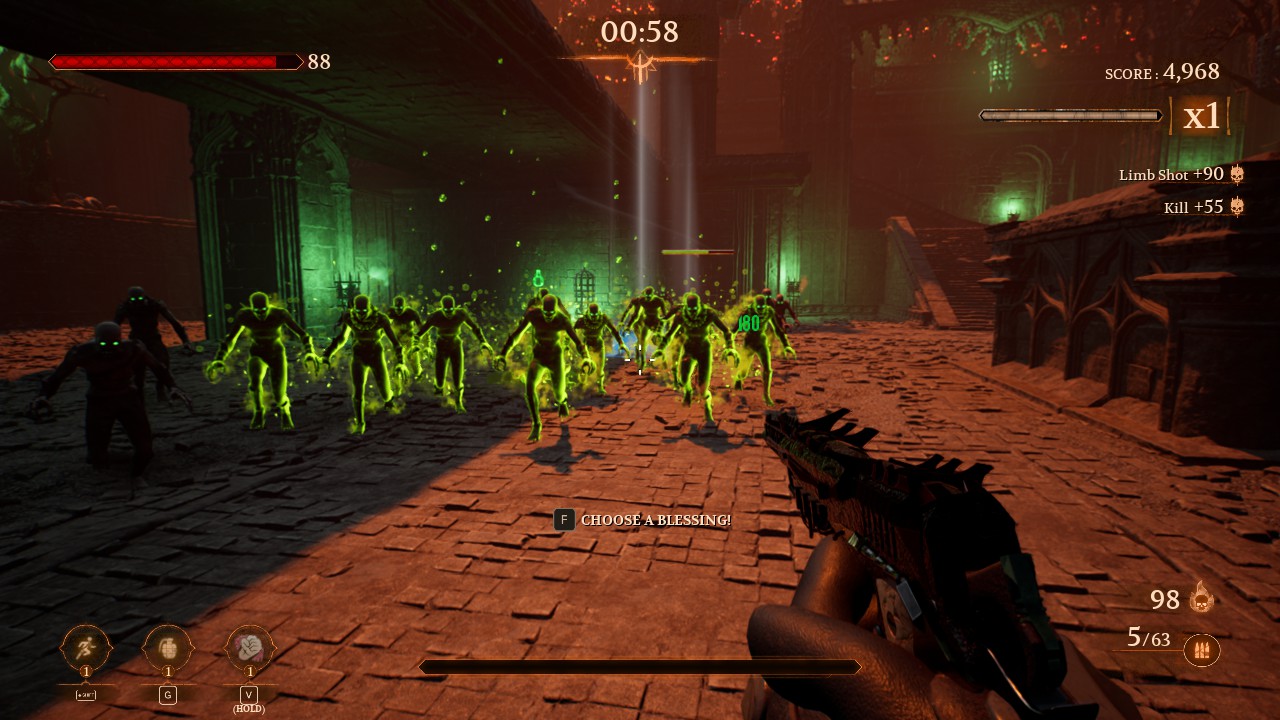As Microsoft Flight Simulator draws close to its three-year anniversary, an interesting debate has become more and more frequent within the circles of its fanbase: the controversial topic of what is and isn’t a “study level” aircraft add-on.
I’ve become more and more familiar with this term since the sim’s initial release back in 2020. That said, it has been a staple of the flight sim industry for several years now. Its entire existence can essentially be credited to yet another age old debate: should flight sims even be classified as “games” to begin with?
The quest for realism
In the over four decades that video games have existed thus far, there’s almost always been an emphasis on how they look and feel “realistic.”
Today, it’s hard to distinguish the in-game visuals of many titles from reality, particularly ones like the titular Microsoft Flight Simulator that feature incredibly high-fidelity graphics. Yet, roll the clock back to the mid-90s when 3D gaming was first smashing its way onto the scene and there were grand claims of how “life-like” the visuals were even back then.
Of course, at that time, excitement surrounding the emerging tech of the time was at a fever pitch. Considering that gamers had never seen visuals of that caliber before, it’s no wonder why so many got wrapped up in the hype. These days, it’s not uncommon to hear some folks who were around at that time admit that their younger brains kind of ‘filled in’ the imperfections of those crude, early 3D visuals. Perhaps even you can think of an early 3D game that you may have loved when you were younger, but when you look back at it now, it doesn’t really hold up as well as you might have remembered.
All of this is true for flight simulators as well. Microsoft Flight Simulator is the tech giant’s longest-running video game franchise ever, having existed for 40 years. That said, there was a 15-year hiatus between the current version of Microsoft Flight Simulator and its predecessor. Even within that timeframe, the leap of visual fidelity is absolutely astounding.
I fondly remember back in 2019 when the current sim was first revealed and my jaw absolutely dropped at how stunning its visuals were. Of course, these sentiments were shared with simmers across the board. All things considered however, it was one thing to just look the part, but how would it play?
Now that the sim is nearly a full three years old, the answer to that question has grown more and more in depth and complexity. Essentially, this has occurred every few months, all thanks to the gradual rollout of sim updates and add-on releases. Especially in recent times as it relates to the latter, there’s a wide variety of different aircraft to choose from. These, combined with the sim now featuring an even richer simulation of aerodynamics, weather effects and other complex operations than it did back in its initial 2020 release, all flow into the overall debate we established at the start of this piece.
“As real as it gets”
The above subheading was the tagline for Microsoft Flight Simulator across several releases. The fact that “simulator” is even in the product’s name, is meant to indicate that this does more than just allow users to ‘play’ as a pilot; it invites them to become one.
For the most dedicated simmers out there, this tagline is a real sentiment. If there are any groups that have certainly fed into encouraging such a sentiment are the add-on studios and peripheral manufacturers. However, our main focus is on the former.
Add-on studios such as PMDG, Aerosoft, Just Flight, and Carenado, just to name a few, have existed for several years. Within that timeframe, they’ve amassed their own dedicated fanbases within the sim community; folks who truly love their products and stand by the claims of delivering authentic, “study level” add-ons of Microsoft Flight Simulator aircraft.
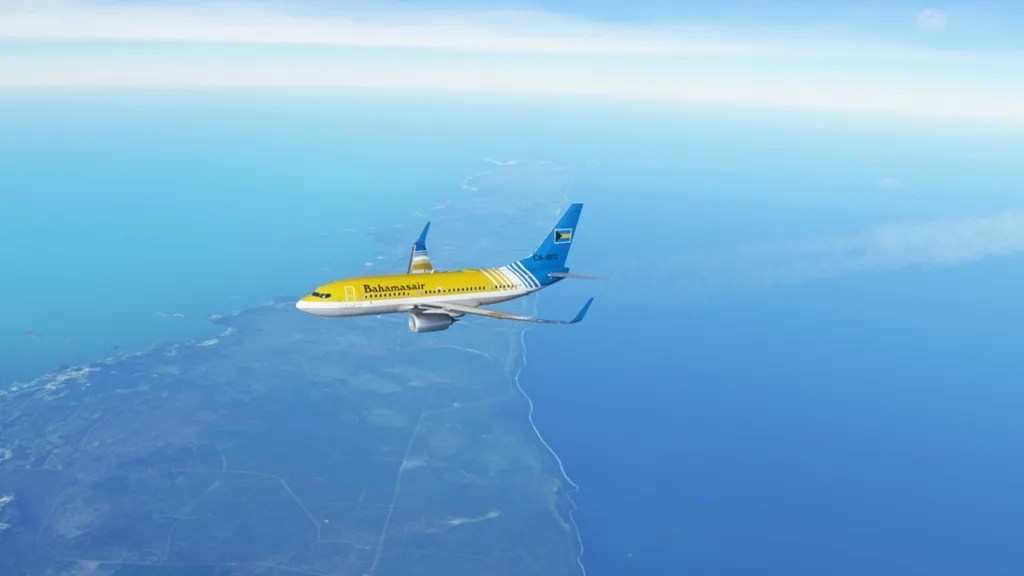
On the flipside, certain brands, even among that short list I just named, are considered of not even being worthy of being given such esteem. Even if their product line isn’t necessarily known for having weak releases, there are folks that will argue which studios just deliver add-ons of ‘okay enough’ quality, compared to that of a more sterling standard.
While this debate has been around for quite some time, it recently bubbled up all over again thanks to the release of an outlier: the first entry in what Asobo Studio is calling its “Expert Series” collection of aircraft add-ons—the ATR 42/72-600 propliner.
Fly me to the moon
Released in late April, the ATR 42/72 has quickly become one of the most sought-after add-ons that Microsoft Flight Simulator has had yet. In fact, Asobo confirmed that it’s the fastest-selling add-on to date during a recent developer livestream.
Despite the ATR’s rapid success, the debate surrounding just how genuinely authentic of an add-on it really is started as soon as it hit the servers.
Personally, I was already quite excited for its release. This is simply due to one key feature: it’s a new airliner release that’s not a jet. So, I was closely following the conversation surrounding it up to and after its release, to see if my excitement was being shared. To an extent, there were many fans like me, but I was intrigued by the number of people who expressed that they would hold off on purchasing it. The reason being? They wanted more willing early adopters to try it and report on if it lived up to the standard.
Upon release, the scrutiny trained rolled out of the station full steam ahead. But, there was an interesting caveat to the whole situation, the price. Asobo surprised just about everyone by slapping a quaint $19.99 USD price-tag on the ATR. And, if that wasn’t enough, since it’s a first-party plane, it also benefits from the 30% discount awarded to owners of the Deluxe/Premium editions of the sim, thus further knocking its price down to a mere $12 USD.
Add-on quality is often judged by a number of factors, but one of the biggest indicators that consumers look for is the price. Particularly when it comes to more complex aircraft like airliners, more often than not, their price is often close to what one would pay for a full AAA game. But, Microsoft Flight Simulator has switched the rules of things a bit, as developers now have access to an incredibly wide customer base. This has led to even veteran studios like PMDG taking a more lenient approach with pricing, offering an overall slightly more affordable slate of options to the market. Still, with most quality airliner add-ons going for at least $50, the $20 price of the ATR truly is a standout.
Again, part of the debates surrounding the ATR is that it’s “only a $20 plane”, so as to say that its price matches its quality.
Having put several hours in the aircraft itself (the add-on, that is), and thinking about this overall discourse for the same amount of time, the conclusion I’ve come to is that this all doesn’t really correlate the way some people think.
Entertainment vs. education in relation to Microsoft Flight Simulator “study level” add-ons
Going back to the point about the debate over what even is a Microsoft Flight Simulator “study level” add-on, the ultimate takeaway is the that this term isn’t really much of a thing. This is mostly due to the fact that the line of qualification as to what is and isn’t study level is ultimately different depending on who you ask. This lack of consistency is the primary reason why the topic is essentially up for debate in the first place.
If the same add-on can be described as ‘genuinely authentic’ by one person, but ‘a pretty toy’ by another, then it’s up for the viewer of the discourse to determine what’s the ‘truth’ by further research. Of course, researching a product before you purchase is always wise. But, in this situation, what it boils down to is what you are looking for out of any given add-on aircraft.
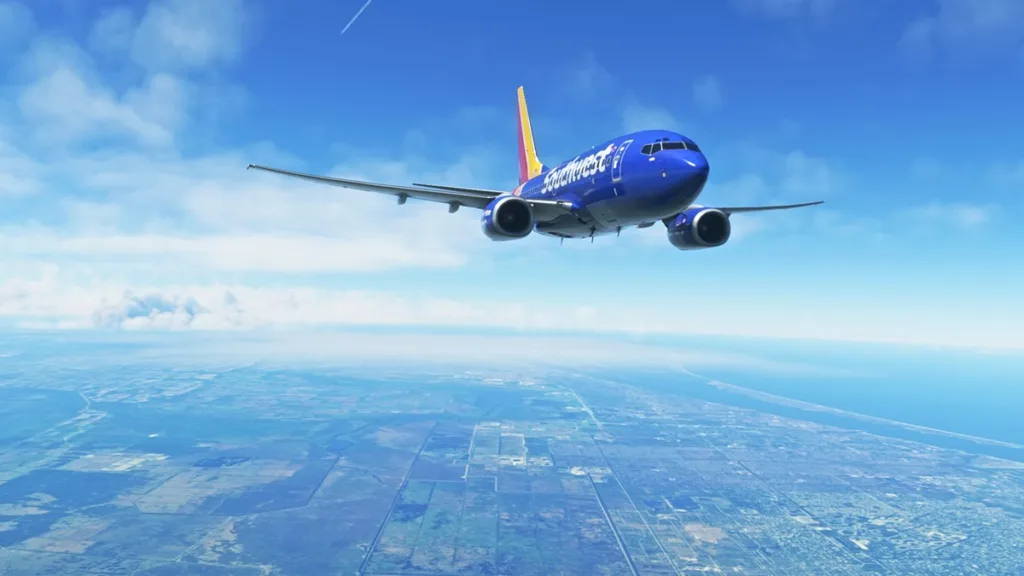
What Microsoft Flight Simulator has proven to demonstrate more and more over its three years on the market is that, even more than its predecessors and also its competitors, this really is a flight sim for everyone.
At the beginning of the article, I pointed to the question of: “should flight sims even be classified as ‘games’ to begin with?” As the years have gone on and these sims have become more advanced, that distinction has become ever more difficult to classify. Now, more than ever, these sims can and do prove useful for allowing real-world pilots to keep their skills sharp by exercising various training sessions. These sims also benefit up-and-coming aviation fans who might either wish to move into the field in real life, or who simply want to live out their dream within the virtual realm despite, limitations that prevent them from truly carrying it out.
This has always been the intention of flight sims, and the devs behind them have only been able to carry out their vision on grander and grander scales with each new release. As Microsoft Flight Simulator continues to prove with its gradually improving rendition of all of planet Earth, such a feat is very much possible with modern tech.
Thus, the expensive add-on aircraft that boast realistic characteristics seek to really push this overall vision to the furthest level. Hence, the term “study level” is used to describe such products that will allow the end-user to truly get a feel for the aircraft they’re simulating, almost as if they were within the confines of its real-life cockpit.
Yet, even for the simmers who do strive to emulate as many realistic parameters of real flying within the confines of their sim, no add-on, no matter its quality, truly matches the real deal. I mentioned earlier how pilots use these products to hone their skills and aviation fans use it to further their knowledge. All of this is true. But, at the end of the day, these are still consumer-grade products. These flight sims, as advanced as they’ve become, still appeal to entertainment first.
Indeed, for every PMDG 737 and all of its complex operations, there’s other add-on products like Got Friends’ ASTRO One which allows simmers to take control of a human-sized dronecopter and race around a course in Moab. It’s this combination of experiences that not only make flight sims special, but also why the overall debate of what is and isn’t realistic, ultimately amounts to a playground fight.
Enjoying the ride
Going back to the ATR specifically, its cheap price tag is not at all indicative of its quality. Being an Asobo-made product, it has the benefit of being subsidized as it is essentially a first-party release. Through the giant that is Microsoft, Asobo has been able to work with a variety of entities to flesh out Microsoft Flight Simulator, from the tech behind it, to the many enhancements made to its world and additions to its aircraft selection. Meanwhile, add-on companies like the aforementioned PMDG, Aerosoft, Just Flight, etc, only make their money via the sale of their add-on products.
They pour hundreds of man-hours into a given project, and are fully reliant on their success to make that money back. So, they need to charge high prices in order to justify all of the R&D put into it. The ATR went through a similar, extensive process of creation, but the costs have been offset.
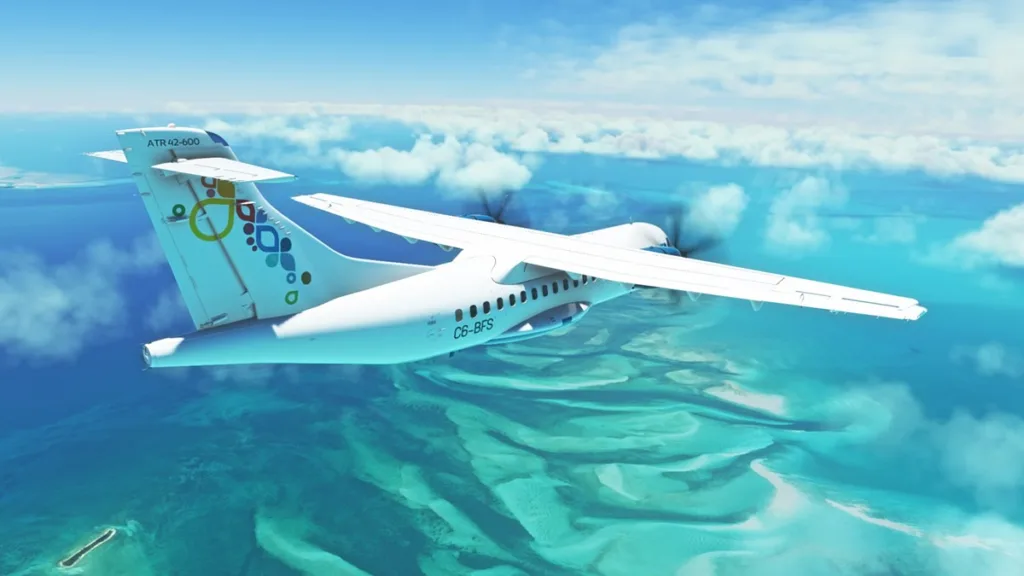
So, with this being the first in Asobo’s “Expert Series” aircraft, it’s really set a precedent for things to come. Asobo has squarely stated that this collection will encompass aircraft renditions that are meant to be realistic; that is, more in-depth than most of the other aircraft it’s produced, both in other collections and what are included with Microsoft Flight Simulator itself. As shown by the ATR, the Expert Series takes some studying to operate, but that doesn’t mean it’s ‘study level’—at least not in the way that most seem to generally interpret the term.
Ultimately, any given aircraft throughout the roster will provide some degree of realism. Products like the ATR, the PMDG 737 and Fenix A320 do push that envelope even more as they strive to simulate more complex characteristics of their given aircraft. However, they’re meant to allow a simmer to enjoy the thrill of flight which requires some liberties being taken to streamline its operation.
In short, much like when flying an aircraft itself, applying too much pressure will incur stress, and could lead to damage. What I’m saying is, worrying out the nitty-gritty details of an add-on only complicates matters and goes against what they’re all ultimately meant to accomplish—to have fun.
Check out more content:
“The Nintendo Switch almost shouldn’t have succeeded; what next?” | “All Pokemon GO “A Valorous Hero” event Timed Research tasks and rewards” | “How to view old Discord messages”

